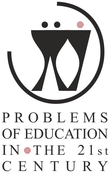FAIRYTALES CREATION POSSIBILITIES OF CHILDREN WITH ATTENTION DEFICIT HYPERACTIVITY DISORDER IN DIAGNOSTICS OF PSYCHO-SOCIAL AND COGNITIVE SPHERE
| Title | FAIRYTALES CREATION POSSIBILITIES OF CHILDREN WITH ATTENTION DEFICIT HYPERACTIVITY DISORDER IN DIAGNOSTICS OF PSYCHO-SOCIAL AND COGNITIVE SPHERE |
| Publication Type | Journal Article |
| Year of Publication | 2010 |
| Authors | Piscalkienė, V, Zinkeviciene, N |
| Journal | Problems of Education in the 21st Century |
| Volume | 25 |
| Start Page | 109-121 |
| Date Published | November/2010 |
| Type of Article | Original article |
| ISSN | 1822-7864 |
| Other Numbers | ICID: 924387 |
| Keywords | attention deficit hyperactivity disorder, cognitive sphere, fairytales creation |
| Abstract | Methods of fairy tales could be applied not only for educational aims but also for diagnostics in socio educational practice. Analysis of children’s created fairy tales is one of the ways to know his/her inner and outer worlds. Child’s emotional state could be evaluated from his/her created fairy tale text. Child’s created fairy tales show his/her social skills and allow to evaluate cognitive sphere. Children with attention deficit hyperactivity disorder tend to have cognitive processes dysfunctions and lack of social skills. |
| URL | http://journals.indexcopernicus.com/abstract.php?icid=924387 |
| Refereed Designation | Refereed |
| Full Text |
